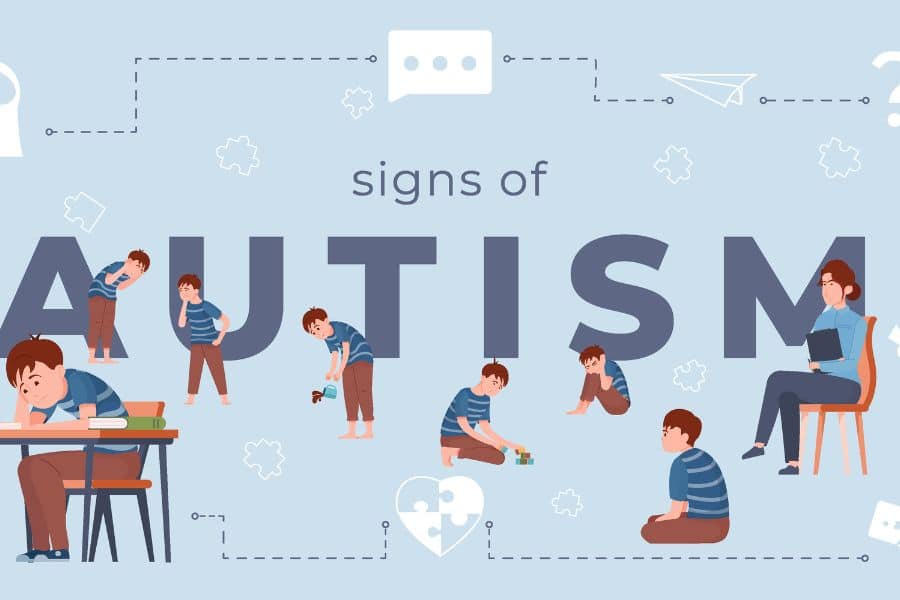Early Signs of Autism in Toddlers: A Simple Guide for Parents
Autism Spectrum Disorder (ASD) is a developmental condition affecting communication, behavior, and social interaction. According to the Centers for Disease Control and Prevention it is estimated that 1 in 36 childrens diagnosed with autism disorder, highlighting the importance of awareness. Early identification of autism is critical as it opens the way for timely interventions that can significantly improve developmental outcomes. This article explores the early signs of autism in toddlers, helping parents and caregivers recognize and act on these indicators.
Overview of Autism Spectrum Disorder (ASD)
Autism Spectrum Disorder encompasses a range of neurodevelopmental conditions involving persistent challenges in communication, social skills, and repetitive behaviors. One of the biggest misconceptions is that all individuals with autism display the same traits, but autism exists on a spectrum, meaning the severity and combination of symptoms can vary widely. Each individual may show different symptoms according to their condition and severity.
Understanding this spectrum is essential. While some toddlers may exhibit noticeable developmental delays, others might show subtler signs. Recognising these early developmental differences can be instrumental in ensuring children receive the support they need.
Early Developmental Signs of Autism in Toddlers
Social Interaction Challenges
- Limited eye contact: A toddler may avoid direct eye contact during interactions.
- Difficulty responding to their name: Even when their name is called repeatedly, they may not react or acknowledge the call.
- Lack of interest in social games: Games like peek-a-boo or pat-a-cake, which are designed to engage toddlers socially, might not capture their interest.
Communication Delays
- Speaking delays: Milestones such as babbling or forming words may be significantly delayed.
- Repetitive language: They might echo words or phrases they hear (echolalia) without understanding their context.
- Challenges with non-verbal cues: Difficulty interpreting gestures like pointing or waving.
Behavioral Patterns
- Repetitive movements: Hand-flapping, rocking, or spinning are common.
- Intense focus: A toddler might fixate on specific objects, like a spinning fan, for extended periods.
- Resistance to change: Shifts in routine or environment can trigger distress.
Sensory Sensitivities
- Unusual reactions: Toddlers might be overly sensitive or indifferent to sensory stimuli, such as loud noises or certain textures.
- Physical touch: Some may avoid hugs or show unusual responses to being held.
Signs Differentiated by Age Milestones
12-18 Months
- Lack of pointing or gesturing: Key gestures such as waving goodbye might be absent.
- Absence of single words: Vocabulary development may lag behind peers.
- Minimal imitation: Actions or facial expressions of others are rarely copied.
18-24 Months
- Limited pretend play: Activities like feeding a doll or pretending to cook might not interest them.
- Inconsistent social responses: They may not respond to smiles or cues from others.
- Reduced peer interaction: Playing alongside or engaging with other toddlers is uncommon.
Importance of Early Screening and Diagnosis
Screening for autism involves observing developmental milestones and identifying deviations. Tools like the Modified Checklist for Autism in Toddlers (M-CHAT) help flag potential signs. Pediatrician and Child Psychologist play a crucial role in this process by conducting developmental assessments and referring parents to specialists if necessary.
An early diagnosis allows for timely interventions like speech therapy, occupational therapy, or behavioural therapy. These therapies are most effective when started early, as they capitalize on the brain’s plasticity during the early years.
Steps for Parents if Signs are Observed
- Observation and Documentation Keep track of specific behaviors or delays. Note instances such as lack of eye contact, delayed speech, or repetitive movements.
- Communicating Concerns Share observations with healthcare providers during regular check-ups. Pediatricians can guide parents toward further evaluation if needed.
- Exploring Diagnostic and Therapeutic Options Specialists like developmental pediatricians or child psychologists can provide a formal diagnosis. Therapies such as speech, occupational, or applied behavior analysis (ABA) can address developmental challenges effectively.
Final Assessment
At Serene Wellness, we understand that recognising the early signs of autism in toddlers is a crucial step in ensuring they receive the appropriate support to thrive. If parents notice developmental delays or behavioral differences, seeking professional guidance from our expert team of psychologists and therapists is essential.
Early intervention at Serene Wellness not only aids in managing symptoms but also creates a comfortable environment for the child to unlock their full potential. With our tailored, holistic approach and prompt care, we ensure that the journey toward growth and development remains a hopeful and empowering experience for both the child and their family.
Image Reference : Freepik
Disclaimer: All trademarks, logos, and brand names are the property of their respective owners. All company, product, and service names used in this website are for identification purposes only. Use of these names, trademarks, and brands does not imply endorsement.





